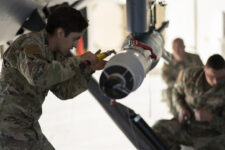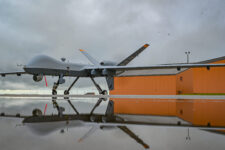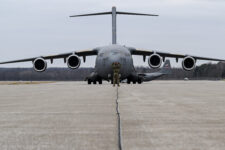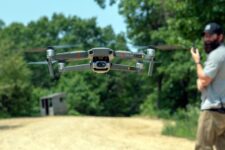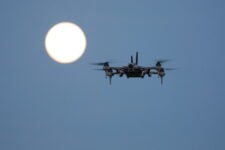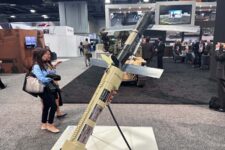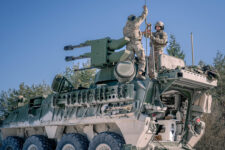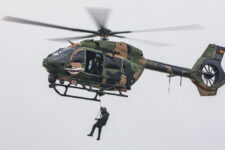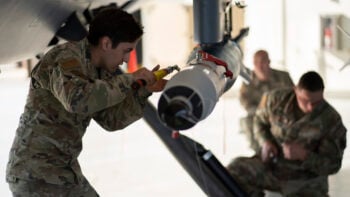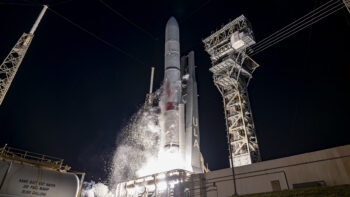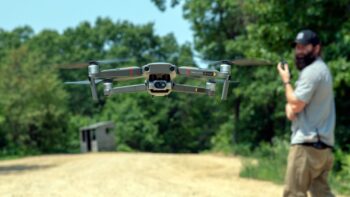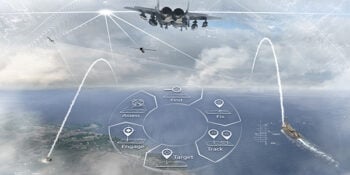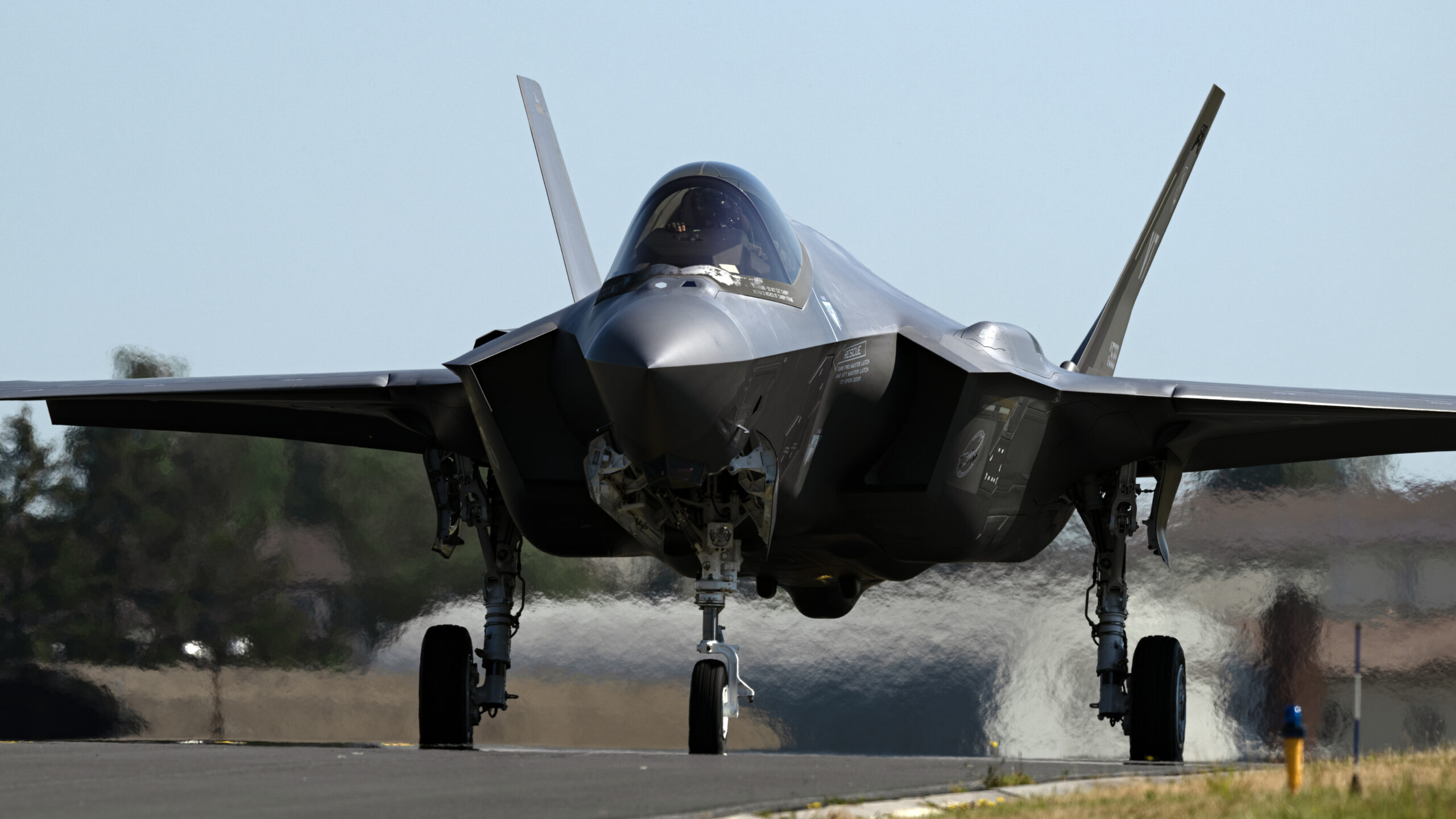
A U.S. Air Force F-35A Lightning II aircraft assigned to the 158th Fighter Wing, Vermont National Guard, taxis at Spangdahlem Air Base, Germany, June 9, 2023, in preparation of Air Defender 23. (U.S. Air Force photo by Tech Sgt. Anthony Plyler)
UPDATED 9/6/23 at 5:33 pm ET with comment from L3Harris.
WASHINGTON — The Pentagon and Lockheed Martin have pushed back an estimate of when deliveries of newly-upgraded F-35s can begin by several months, a further delay that means as many as two dozen fewer Joint Strike Fighters will be delivered in 2023 than expected, the company said today.
Until now, Lockheed predicted that the first F-35s loaded up with what’s known as the Tech Refresh 3 (TR-3) update could be delivered by the end of the calendar year, but the company now estimates that the first delivery won’t occur until sometime between April and June 2024. As a result, the company anticipates that a total of 97 F-35s will be delivered in 2023, down from a previous estimate of anywhere between 100 to 120, the company said in a statement.
Notably, in a statement to reporters, Lockheed identified its partners on the program as the source of the delay.
“The development of the L3Harris Integrated Core Processor (ICP) has driven most of the delays due to unexpected challenges associated with hardware and software development, component and system integration testing and system qualification testing. The hardware development challenges impacted hardware/software integration, driving industry to implement mitigations to meet the Lot 15 insertion,” a Lockheed spokesperson said. (The ICP is essentially the hardware for TR-3.)
“We have deployed employees to L3Harris to help expediate hardware delivery and are working diligently with Raytheon on their delivery of the Next Gen Electro Optical Digital Aperture System (EODAS), which will also be integrated with TR-3. TR-3 remains our number one development priority. We are applying critical expertise to deliver TR-3, with more than 500 employees,15 labs and flight test occurring at Edwards Air Force Base and Naval Air Station Patuxent River,” the spokesperson added.
After publication, L3Harris provided Breaking Defense a statement noting that the company “overcame some early design challenges and delivered a fully qualifiable Integrated Core Processor (ICP) to Lockheed Martin well over a year ago.
“In June 2022, L3Harris began delivering flight test hardware after completing Safety of Flight (SOF) qualification testing,” the company continued. “We continue to work closely with Lockheed Martin to support them in the integration of their software into the TR3 hardware. L3Harris remains fully committed to the F-35 Program, to the U.S. military, and international partners.”
A spokesperson for RTX subsidiary Raytheon did not immediately respond to a request for comment.
TR-3 provides the computing backbone to enable a suite of new capabilities known as Block 4. Developmental woes have stretched out that delivery schedule, prompting the Pentagon to halt new deliveries of the fighter until testing for TR-3 completes, Breaking Defense previously reported.
The aerospace giant originally expected to deliver between 147 and 153 of the stealth fighters this calendar year, a number that was previously revised down to the 100-120 figure. The company said fighter deliveries of jets planned with the TR-2 configuration will still continue.
“We are producing F-35s at a rate of 156 per year and expect to continue at that pace while simultaneously working to finalize TR-3 software development and testing,” the company said in a statement.
Byron Callan, an analyst with Capital Alpha Partners, said in a note to investors that the delay “raises an issue on 2024 financial guidance, though it is timing-related, and we assess that there remains strong support for the F-35 and TR-3.” Reuters first reported the additional TR-3 schedule slip.
According to a report in Bloomberg, the Pentagon expected that an average of nine TR-3 F-35s would be delivered per month, with as many as 101 total delivered by July 1, 2024. The prolonged delay now means that many, if not virtually all, of those aircraft are at risk of being warehoused until TR-3 work completes, at which point the Pentagon would finally take delivery.
Russ Goemaere, a spokesman for the F-35 Joint Program Office, told Breaking Defense in a statement that five TR-3 aircraft have so far rolled off Lockheed’s production line. He said though the program has “made significant progress” on the TR-3 effort, officials “have also experienced challenges with TR-3 software maturity during flight test.”
The F-35 enterprise has received monthly updates on TR-3 progress and challenges, said Goemaere, who added that due to “remaining risk in the TR-3 program,” the Pentagon has updated its estimate for TR-3 deliveries to be in line with Lockheed’s April to June 2024 timeframe.
“We continue to work very closely with industry partners, particularly Lockheed Martin, to address program risk and deliver TR-3 to warfighters,” Goemaere said.
The US is losing the race for better munitions. Here’s how to help.
In this op-ed, Will Durant of ETC explains that the US is behind its adversaries in innovating new munitions, and how it can catch up.
